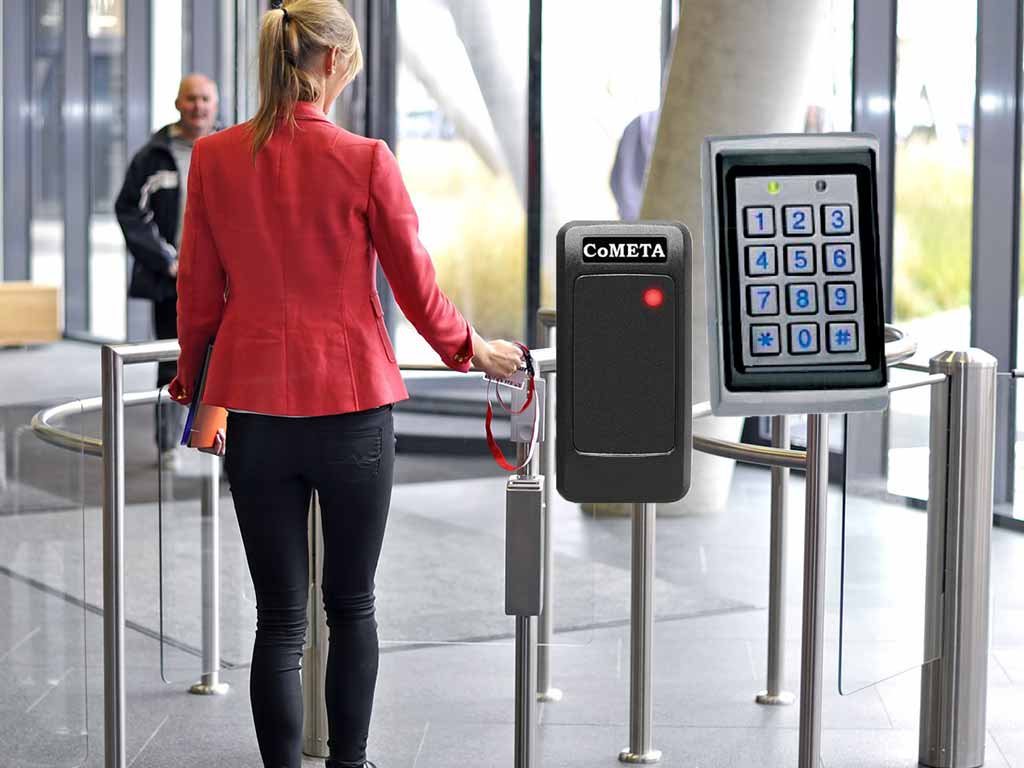Have Questions?
To help make this decision easier, we have put together a list of the main questions that you should ask when selecting an access control system.
The first factor to consider when choosing the right commercial access control system is whether your business will have problems using and implementing it. It doesn’t make sense to invest in a system that will be used incorrectly or not at all because it doesn’t fit the company’s needs.
Owners and managers should decide ahead of time who will manage the system and what the operational access policies will be put into place. These should cover the protocol for onboarding new hires and deactivating access privileges for employees leaving the company. Be realistic about the amount of time needed to handle this job and enforce policies.
Secondly, you should define the ideal functions to fit your business. Think about the need for an on-site, web-based or remote access control interface. Discuss which access points and areas of the facility require a higher level of security. Make a list of the options and integrated systems that will help your business boost security. These may include:
- Access reporting,
- Remote monitoring via a mobile app or computer,
- Real-time notifications,
- Surveillance or CCTV cameras,
- Emergency exit notifications,
- Integration with HR management programs,
- Fire detection and alarms, and
- Break-in detection and security alarms.
Additional features may include integrated cashless vending, staff time monitoring and attendance tracking.
Finding the right type of access control system depends heavily on the robustness required. This takes into account the number of employees and staff who will need entry permission, as well as the amount of traffic that will need to be managed at any one time. Depending on the structure of your company, you may also need to consider access for deliveries and visitors.
Think about the flow of people coming in and out of the building during office hours, the evening and weekend. Access systems should fit the number of entry points in the building while unifying entry data, time stamps, users, credentials and permissions in one portal.
When selecting the right access system, consider the number of doors and entry points that need to be monitored simultaneously. If your access control system needs to cover offices, stockrooms and employee areas, it may need to offer more advanced monitoring needs.
There are a lot of options to consider in terms of entry input methods. Proximity readers which operate with access cards or fobs, keypads and biometric entry systems offer different levels of security and speed of use. For example, biometric systems are considered more secure because entry input cannot be shared with other users. However, because they tend to slow down entry traffic, biometric systems aren’t the best solution for buildings used by a large number of employees or staff.
It’s true that access control systems can be selected to fit smaller or larger facilities with different needs in terms of traffic. But your company should consider future growth. If you foresee an increase in the number of employees or the size of the facility in the coming years, the access system should be flexible enough to accommodate this growth. When considering scalability, think about the business outlook for the next 5 – 10 years.
Access control systems generally work with electrified automatic hardware or electromagnetic locks. The type of business and the relevant building codes and fire safety regulations will help determine what kind of hardware is needed. Fail-safe hardware will unlock in case of a power outage or emergency, allowing easy egress. Alternately, fail-secure hardware stays locked from the outside if electricity fails for any reason. When selecting an access system, it’s important that it works with the existing hardware and meet all building and safety standards.
Simple access control systems function with electronic keys – usually fobs or access cards. Components of these systems include a control panel, exterior proximity readers and electrified locks at each entry point. A centralized control panel could manage access to one door or for multiple doors.
Complex access control systems manage multiple entry points, but also enable traffic monitoring. Monitored access systems usually require an added component which also records data about people exiting the building or area. In addition to a control panel and electrified hardware, it will need a second proximity reader or automated request-to-exit (REX) device. This will be mounted on the interior of the doorway in order to track users’ movement around the facility and restricted access areas. The number of proximity readers, REX devices and control panels increases with the number of doorways included in the monitored access system.
Because your access control system is invaluable to your business’s safety, it’ll require routine maintenance and updates. For this reason, you’ll need to choose a service provider with a proven reputation.
For the long-term company budget and facility security standards, ask about when upgrades and component replacement will be necessary. A controlled access system must grow and evolve with your business’ needs. As the technology available for access control improves, your company will also want to keep the system up to date to ensure top security. Our locksmiths advise clients to consider upgrades every three to five years.
Systems must stand up to a lot of wear and tear over the years, especially or high-traffic usage. When looking at the various commercial access control systems available, your company should also consider the length of the warranty or service period offered by the manufacturer and installer.
A system’s automatic data backup options are critical to its functionality. For this reason, you might need to consider purchasing additional hardware to cover the digital space requirements. There are now also cloud-based access control options which offer a wealth of advantages.

